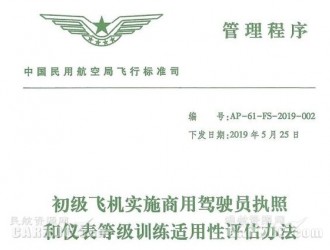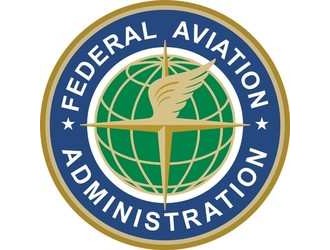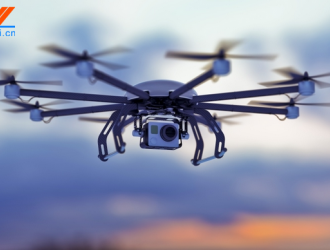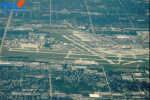In order to further promote the development of general aviation, gradually promote the application of primary aircraft, while ensuring the safety and quality of flight training, orderly carry out the applicability assessment of primary aircraft for flight training, and clearly implement the use of primary aircraft to implement commercial pilot licenses and instruments. Requirements, standards and procedures for grade training. Recently, the Flight Standards Division of the Civil Aviation Administration of China issued the “Measures for the evaluation of Applicability of Commercial Pilot Licenses and Instrument Level Training for Primary Aircraft”. This management procedure is applicable to the assessment of the suitability of aircraft commercial pilot licenses and instrument level training in accordance with the primary aircraft defined in CCAR-61.

“Measures for the evaluation of Applicability of Commercial Pilot Licenses and Instrument Level Training for Primary Aircraft” (Full Text)
1 Background and purpose
In the Civil Aircraft Driver Certification Rules (hereinafter referred to as CCAR-61), the pilot's license training objectives and requirements will be validated according to CCAR-23, normal, utility, special or commuter aircraft. A small fixed-wing aircraft certified to be approved for transport aircraft in accordance with CCAR-25 is defined as a primary aircraft.
According to the China Civil Aviation Airworthiness Certification Rules, in addition to the aircraft categories approved by CCAR-23 and CCAR-25, primary aircraft (AC-21-AA-2009-37) and very light aircraft (AC-21-) are also stipulated. Airworthiness certification standards for AA-2009-05R1), ultralight aircraft (AC-21-06) and light sport aircraft (AC-21-AA-2015-25R1).
In order to clarify concepts and avoid confusion, the primary aircraft described in this management procedure include light and small aircraft such as the above-mentioned primary, very light, ultralight and light sports.
In recent years, with the optimization of light and small aircraft model design, the advancement of manufacturing processes and the improvement of aircraft materials, more and more light and small aircraft models with high electronic integration and superior flight performance have emerged in the general aviation market. In order to stimulate the potential of China's general aviation industry and promote the development of domestic aircraft manufacturing and flight training, the Civil Aviation Administration has allowed the use of primary aircraft for private pilot license flight training since 2018, which has greatly expanded the range of models used for private training. The overall condition is good.
In order to further promote the development of general aviation, gradually promote the application of primary aircraft, while ensuring the safety and quality of flight training, orderly carry out the applicability assessment of primary aircraft for flight training, and clearly implement the use of primary aircraft to implement commercial pilot licenses and instruments. This management procedure is specifically formulated for the requirements, standards, and procedures for level training.
2 Scope of application
This management procedure is applicable to the assessment of the suitability of aircraft commercial pilot licenses and instrument level training in accordance with the primary aircraft defined in CCAR-61. Among them, the primary aircraft used for the implementation of the sports driver's license and the private driver's license training are not applicable to this management procedure.
Since the overall course of the route transport driver (aircraft) for the CCAR-121 operation and the training quality of the aircraft type multi-person crew pilot license course are directly related to transport aviation safety, all training stages of such courses still require the use of aircraft for training. , does not apply to this management program.
3 Reference files
Civil Aviation Products and Parts Certification Regulations (CCAR-21)
Airworthiness Regulations for Normal, Practical, Stunt and Commuter Aircraft (CCAR-23)
Civil Aircraft Driver Certification Rules (CCAR-61) General Operations and Flight Rules (CCAR-91)
Civil Aircraft Pilot School Certification Rules (CCAR-141)
4 General requirements
4.1 Basic conditions
Primary aircraft intended to implement commercial pilot license and instrument level training shall meet the following basic conditions:
1. Configuration requirements
(1) It has a front three-point landing gear. (2) With retractable flaps. (3) It has a closed cockpit.
(4) A driver's seat havin at least two left and right layouts, and havin an engine operating device and a flight maneuvering device. These controls should be located in a convenient, normal operation from both driver's seats.
(5) There is sufficient visibility on at least two driver seats so that each driver can perform safe operations.
2. Performance requirements
(1) The maximum takeoff weight is not less than 500 kg. (2) The maximum payload is not less than 200 kg.
Note: The payload is the weight of the pilot, passenger, baggage, available fuel and replaceable oil. It is calculated by subtracting the basic empty weight from the maximum total weight.
(3) The maximum range is not less than 700 kilometers. (4) The maximum battery life is not less than 4 hours.
(5) The cruising speed corresponding to 75% of the maximum continuous power is not less than 95 knots (vacuum speed).
(6) The maximum demonstration crosswind limit is not less than 7 m/s.
4.2 evaluation requirements
1. For commercial driver license and instrument level training, if operated according to visual flight rules or instrument flight rules, the primary aircraft to be used shall meet the operational requirements of the corresponding models approved by the Chinese Civil Aviation Airworthiness Administration; In the case of analog instrument flight rules, the intended primary aircraft should be fitted with appropriate instrumentation and ensure proper operation without the need for airworthiness certification of instrument flight rules.
2. Primary aircraft intended for day-to-day training shall be assessed by this management procedure for primary aircraft suitability documentation and daytime training flight assessment.
3. The primary aircraft intended for night training shall, in addition to meeting the requirements for the type of training in the day-to-day management procedures, be assessed by night training flights.
4. The primary aircraft to be used for instrument level training shall, in addition to meeting the requirements for the training type of the management procedures, also be assessed by the instrument level training flight.
5. The primary aircraft that have been evaluated can be used for commercial pilot or instrument level training checks and exams other than spiral subjects, depending on the type of assessment.
6. No commercial pilot license and instrument level training, inspections and exams may be implemented on primary aircraft that have not passed the assessment.
7. The cost of the primary aircraft operating during the flight assessment process and the losses caused by the accident are borne by the respective manufacturer's volunteers.
5 evaluation procedures
5.1 Policy Advisory
Manufacturers interested in conducting the assessment of the suitability of primary aircraft may consult with the CAAC Standards Standards and Procedures for the assessment of the suitability of primary aircraft for relevant regulatory documents and policy information.
5.2 evaluation Request
For each primary aircraft model to be evaluated for suitability, the corresponding manufacturer shall voluntarily submit an evaluation request to the CAAC Flight Standards Division, fill out the preliminary aircraft suitability assessment request form (see Annex 1 for details), and provide the corresponding model number. Qualified/approved certification materials (including data sheets).
5.3 document evaluation
After receiving the corresponding materials provided by the manufacturer, the CAAC Flying Standards Division confirms the completeness of the materials and assigns the corresponding primary aircraft suitability assessment experts to conduct document evaluation.
The document assessment shall assess the conformity and performance compliance of the primary aircraft in accordance with the requirements of paragraph 4.1 of this management procedure and complete the preliminary aircraft suitability document assessment worksheet (see Appendix 2 for details).
5.4 Flight assessment
After the document is evaluated, the pilot designated by the manufacturer acts as the captain and cooperates with the evaluation experts designated by the Civil Aviation Authority's Flying Standards Division to conduct the flight assessment. The manufacturer's designated pilot shall hold at least a commercial pilot license and have a category and level rating corresponding to the evaluation model.
The flight assessment shall be based on the requirements of Section 4.2 of the Management Procedure and the applicable categories of the request to assess the flight account compliance of the primary aircraft and complete the preliminary aircraft suitability flight assessment worksheet (see Annex 3 for details).
5.5 Confirmation and publication
The CAAC Flying Standards Division confirms the assessment conclusions based on the assessment report and assessment worksheet submitted by the assessment experts.
The list of primary aircraft manufacturers and models that have passed the assessment, and the types of assessments to be applied, will be published on the Civil Aviation Authority's pilot information consultation website (htp:/pilot.caac.gov.cn) and will not proceed according to the progress of the assessment. Regularly updated.
6 implementation date
This management program shall be implemented as of the date of issuance.





